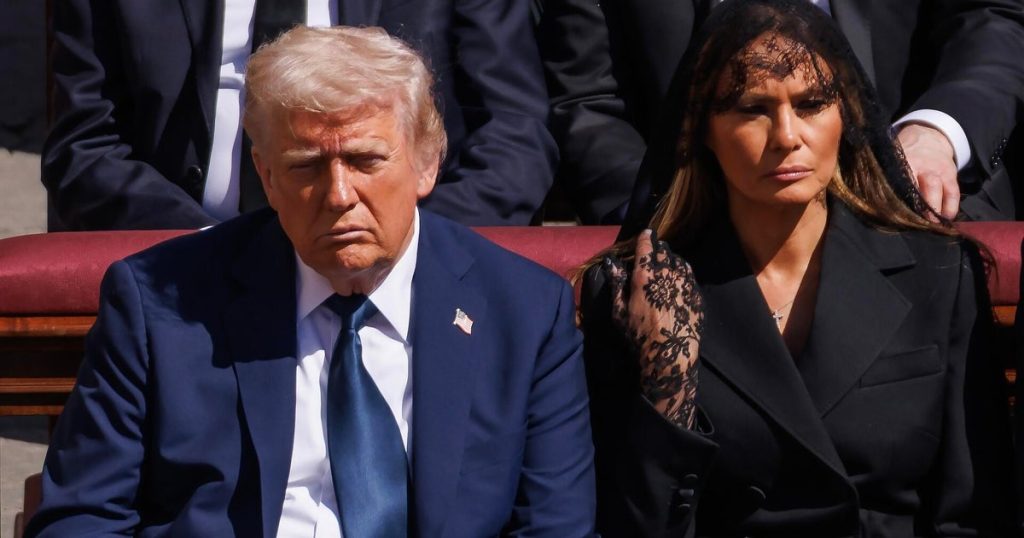On April 26, 2025, around 200,000 mourners gathered in Rome to say their final goodbyes to Pope Francis, affectionately known as the “People’s Pope.” The funeral held at St. Peter’s Square witnessed the presence of dignitaries, including heads of state and reigning monarchs, who paid their respects to the late pontiff. With a meticulous seating arrangement accommodating delegations from approximately 130 countries, the ceremony showcased the global influence and legacy of Pope Francis.
| Article Subheadings |
|---|
| 1) Arrangement of Seats: A Testament to Significance |
| 2) A Front Row Experience: Who Was Seated Where? |
| 3) Conversations and Interactions: Meeting of Global Leaders |
| 4) Notable Attendees: A Global Gathering |
| 5) Legacy of Pope Francis: A Lasting Impact |
Arrangement of Seats: A Testament to Significance
The funeral of Pope Francis marked a historic moment and was filled with meticulous planning. The seating arrangements for the dignitaries and heads of state were made thoughtfully to honor the global influence of the pontiff. Located to the right of the altar outside of St. Peter’s Basilica, the official delegations were organized according to diplomatic protocols. The Argentine leader, representing the late pope’s home country, was placed prominently in the front row, underscoring the significance of Francis’ heritage and the warmth he brought to the Catholic Church worldwide. The ceremony was attended by representatives from about 130 nations, reflecting the unity and respect garnered by Pope Francis across cultures and borders.
A Front Row Experience: Who Was Seated Where?
As the sun rose over St. Peter’s Square, distinguished guests, including former and current heads of state, arrived for the solemn ceremony. Among them, U.S. President Donald Trump and First Lady Melania Trump took their seats before the service commenced. Accompanying them were notable figures such as Estonian President Alar Karis, King Felipe VI of Spain, and Queen Letizia. The seat allocation followed a systematic approach, where the U.S. was classified under “E” for “États-Unis,” a reflection of adherence to French alphabetical order rather than traditional English standards. This elegant arrangement ensured that leaders were grouped in a manner that respected diplomatic practices while also honoring their connections to the late pope.
Conversations and Interactions: Meeting of Global Leaders
The atmosphere during the funeral was charged with a blend of solemnity and curiosity. Observers noted the notable proximity of President Zelenskyy of Ukraine to President Trump, elevating the attention given to their past interactions. As they sat merely ten seats apart, reports of their prior private discussion prior to the ceremony emerged, adding a layer of intrigue to the event. Described as “very productive,” this meeting covered essential topics of mutual concern and illustrated the interplay of diplomacy even amidst tragedy. Additionally, the exchanges between leaders during the ceremony highlighted the need for unity and collaboration, principles that Pope Francis passionately advocated throughout his tenure.
Notable Attendees: A Global Gathering
The scale of attendance at the funeral was reflective of the vast reach of Pope Francis’ work. Several high-profile leaders were present, including Britain’s Prince William, U.K. Prime Minister Keir Starmer, and French President Emmanuel Macron. The presence of various heads of state from diverse backgrounds indicated a collective effort to honor Francis. Political figures such as outgoing German Chancellor Olaf Scholz and Italian Prime Minister Giorgia Meloni also attended, further emphasizing the significance of the pontiff in international affairs. The diverse attendance demonstrates Pope Francis’ universal appeal, transcending not just religious but also political and cultural lines, uniting multiple global narratives under one common thread.
Legacy of Pope Francis: A Lasting Impact
Pope Francis’ legacy is marked by his commitment to social justice, environmental stewardship, and interfaith dialogue. His progressive outlook challenged traditional boundaries within the Church and engaged with contemporary issues such as climate change and the plight of refugees. As mourners from across the world gathered to pay their respects, they did so not only to honor his memory but also to reflect upon the principles he instilled through his work. The legacy of Pope Francis speaks to a generation yearning for responsible leadership and compassionate governance, concepts that were shadowed by his passing but will undoubtedly continue to shape discussions among world leaders.
| No. | Key Points |
|---|---|
| 1 | Around 200,000 people attended Pope Francis’ funeral in Rome. |
| 2 | Dignitaries from approximately 130 countries were present. |
| 3 | Seating arrangements adhered to diplomatic protocols, emphasizing the pope’s global significance. |
| 4 | Important conversations occurred among world leaders during the ceremony. |
| 5 | Pope Francis’ legacy of compassion and social justice continues to inspire. |
Summary
The funeral of Pope Francis was not just a farewell to a beloved leader but a historic event that brought together dignitaries from around the globe to honor his profound legacy. The meticulous planning behind the seating arrangements and the notable presence of world leaders highlighted the significant impact he had on global affairs. As the world reflects on his teachings and values, the hope remains that his ideals of unity, justice, and compassion continue to influence future generations.
Frequently Asked Questions
Question: What was the significance of gathering 200,000 mourners in Rome?
The large number of mourners exemplified the profound impact Pope Francis had on people from all walks of life, representing a global community in mourning.
Question: How were dignitaries seated during the funeral?
Seating was arranged based on diplomatic protocols, with countries ordered according to the French alphabetical system. This included prioritization for reigning monarchs.
Question: What legacy did Pope Francis leave behind?
Pope Francis is remembered for advocating social justice, environmental sustainability, and encouraging interfaith dialogues, influencing the future direction of the Catholic Church and world leaders.


